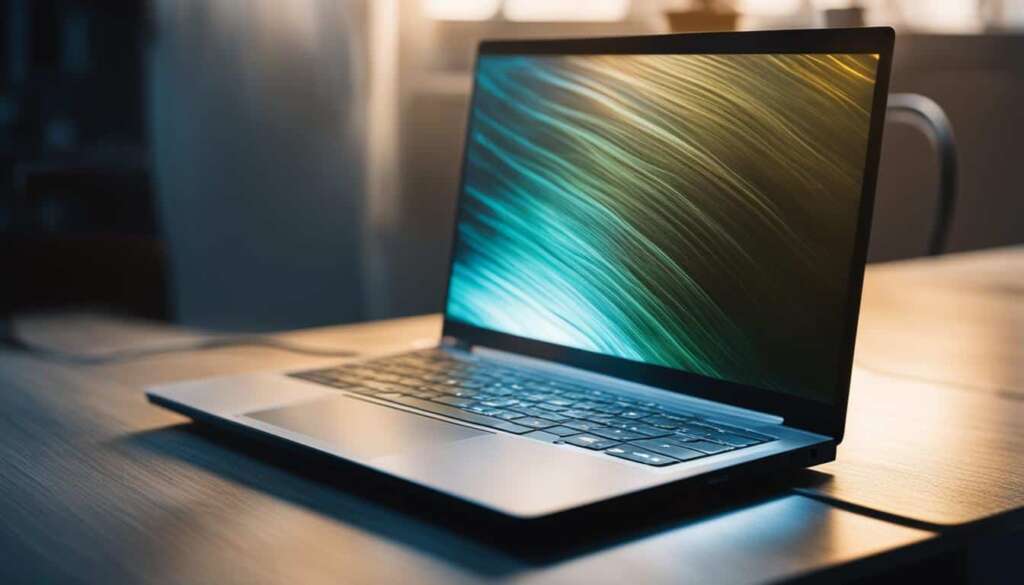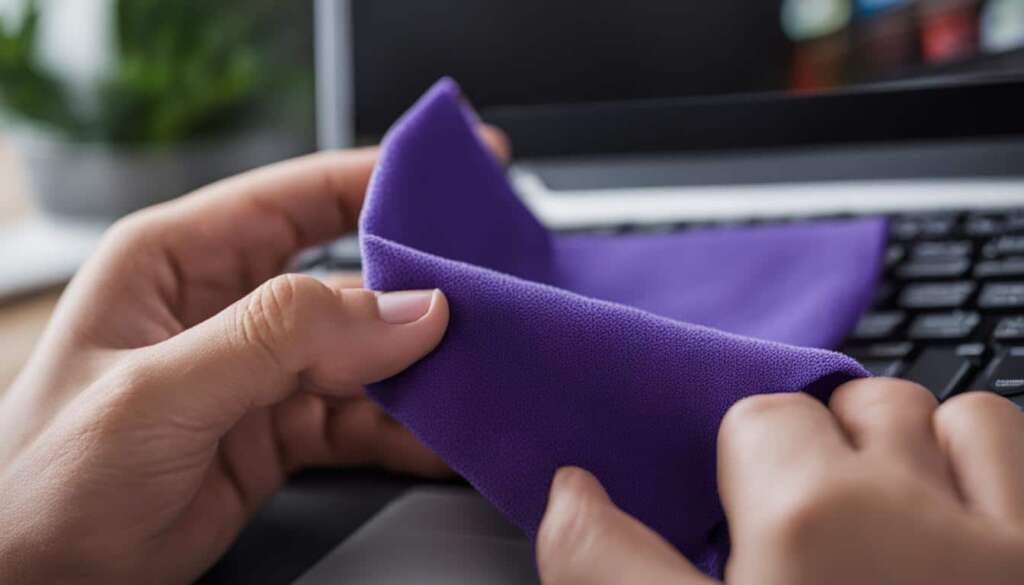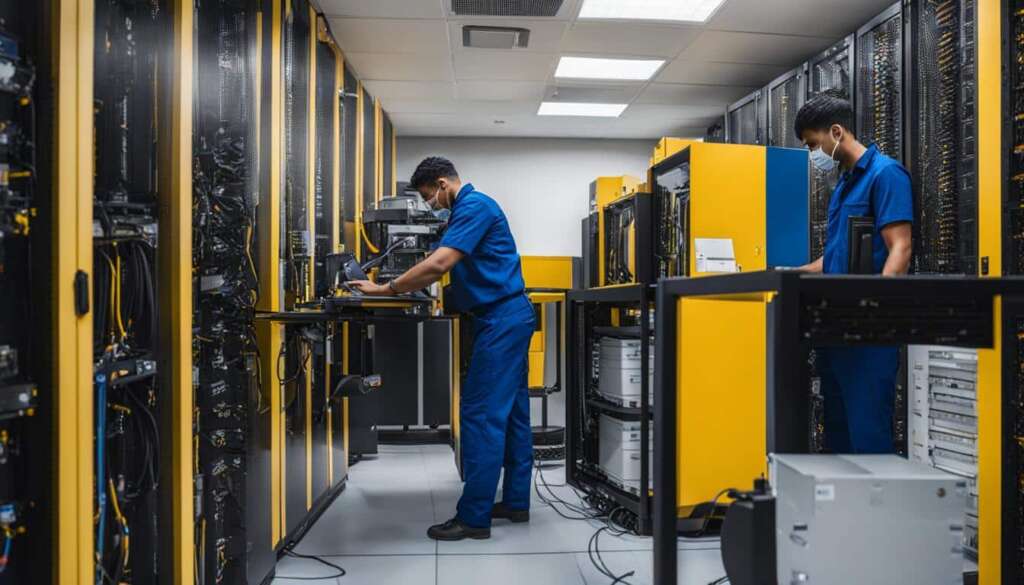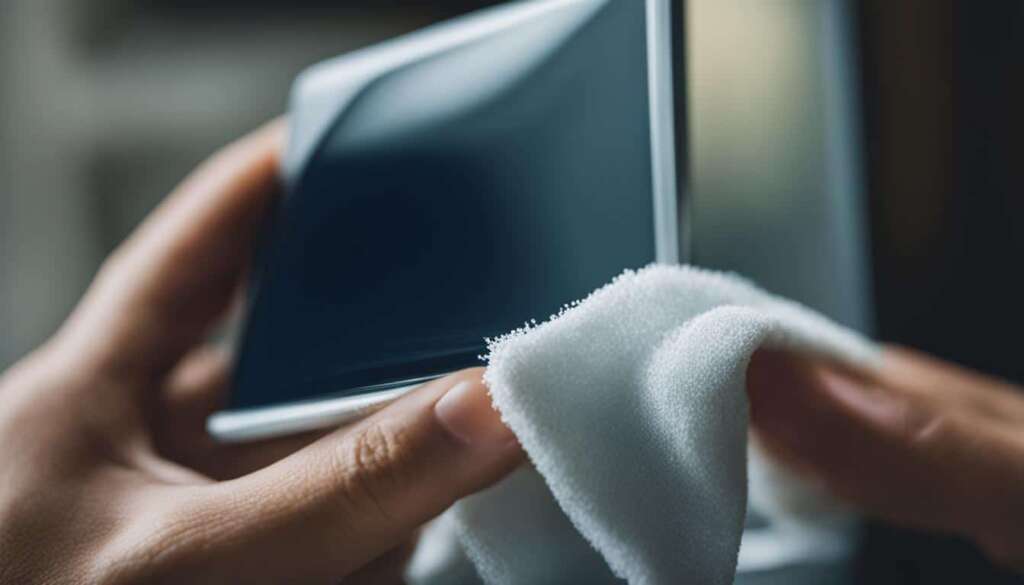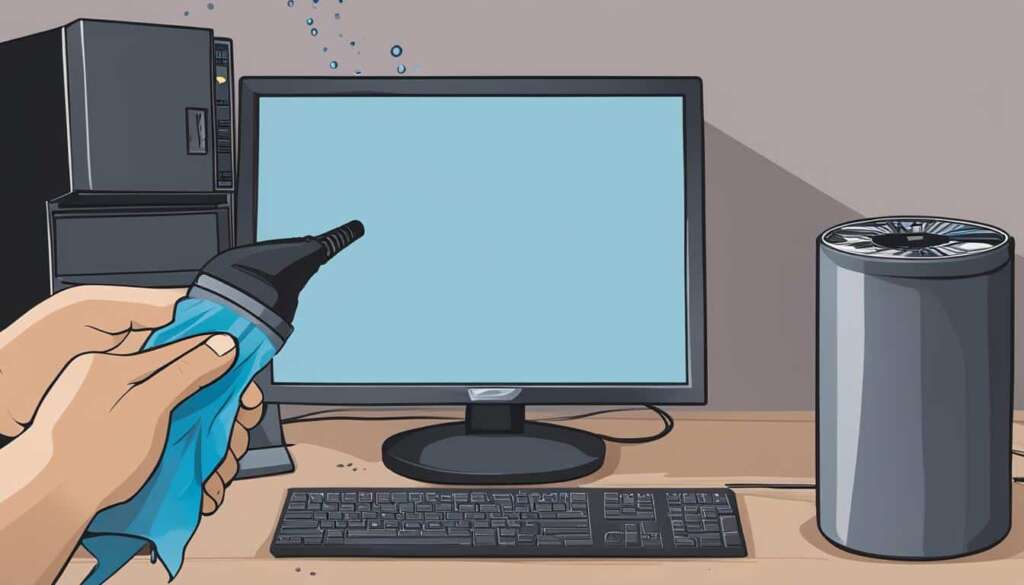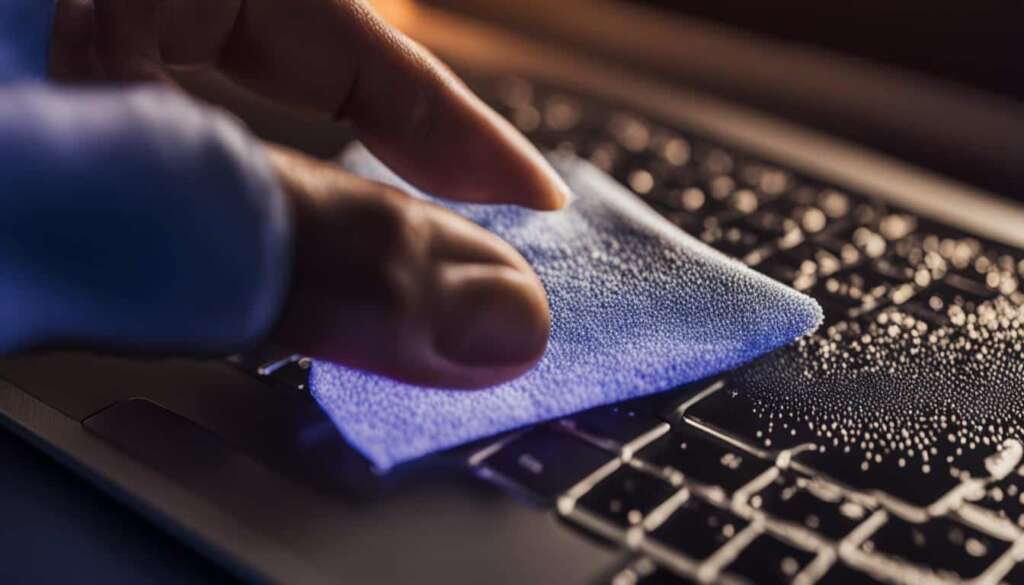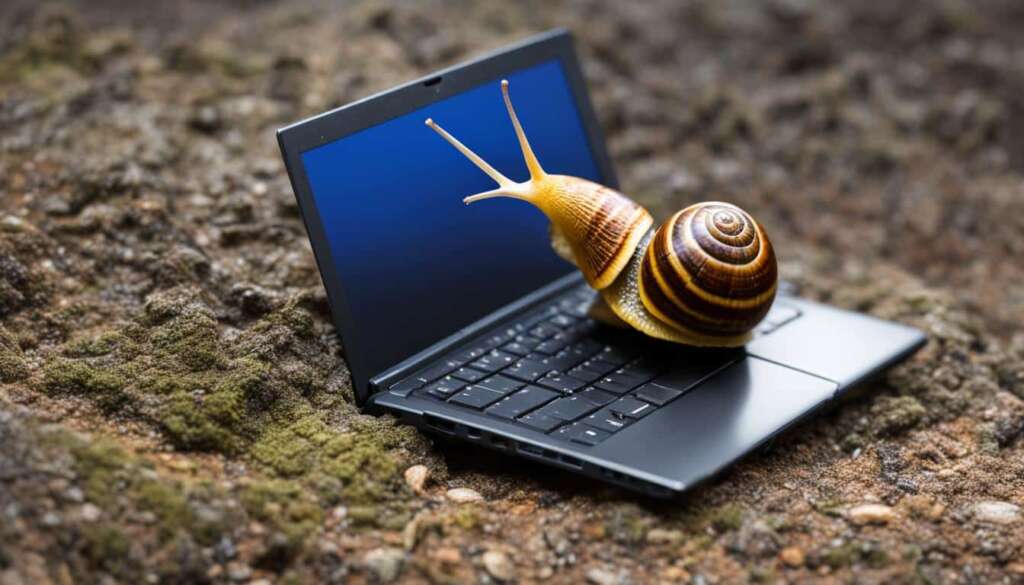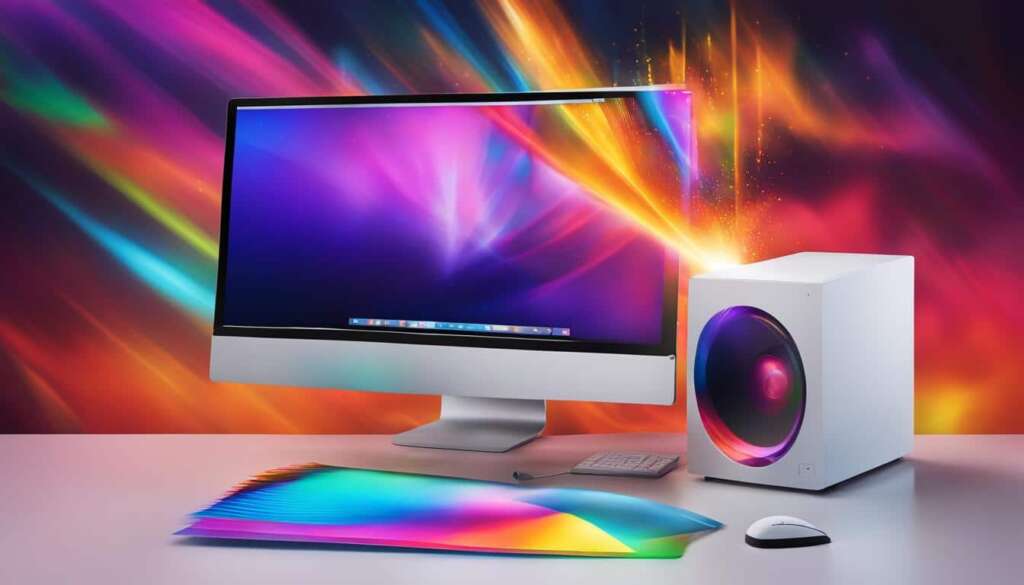Table of Contents
Is your laptop screen looking dull and dirty? Don’t worry, we’ve got you covered. In this guide, we’ll show you how to clean a laptop screen safely and effectively, bringing it back to life and ensuring crystal-clear visuals for your work and entertainment.
Over time, your laptop screen can accumulate dust, smudges, and fingerprints, affecting its image quality and overall performance. Cleaning your laptop screen regularly is essential to maintain its longevity and prevent potential damage.
With our expert tips and techniques, you’ll be able to clean your laptop screen like a pro, without the risk of scratches or damage. Say goodbye to blurry images and hello to a sparkling clean screen that enhances your viewing experience.
So, if you’re ready to learn how to clean a laptop screen safely and effectively, let’s dive in and revitalize your laptop screen together.
Understanding Laptop Screens
Laptop screens play a crucial role in delivering a visually immersive experience. To understand the intricacies of laptop screens, it is important to explore the different types available in the market. Let’s dive into the world of laptop screens and discover the characteristics and advantages of LCD, LED, and OLED screens.
LCD Screens
The most common type of laptop screen is the LCD (Liquid Crystal Display) screen. LCD screens use thin panels that control the amount of light passing through liquid crystals to produce images. This technology offers sharp image quality, energy efficiency, and excellent performance in various lighting conditions.
LED Screens
LED (Light Emitting Diode) screens have gained popularity in recent years. This technology uses LED backlighting to illuminate the LCD panel, resulting in vibrant and accurate colors. LED screens provide enhanced durability, reduced power consumption, and a wider color gamut, making them a preferred choice for multimedia enthusiasts and gamers.
OLED Screens
OLED (Organic Light Emitting Diode) screens are known for their exceptional color accuracy and contrast. Each pixel in an OLED screen emits its own light, allowing for precise control over brightness and individual pixel performance. OLED screens offer deep blacks, wide viewing angles, and vivid colors, delivering an unparalleled visual experience for professionals and entertainment enthusiasts.
Understanding the different types of laptop screens is essential for troubleshooting and identifying screen-related issues. Whether you are dealing with a cracked LCD screen or configuring the display settings, grasping the nuances of LCD, LED, and OLED screens will empower you to make informed decisions and optimize your laptop’s performance.
| Laptop screen type | Advantages |
|---|---|
| LCD screens | Sharp image quality, energy efficiency, suitable for various lighting conditions |
| LED screens | Vibrant colors, durability, reduced power consumption, wider color gamut |
| OLED screens | Superior color accuracy, deep blacks, wide viewing angles, vivid colors |
Importance of Proper Care and Handling of Laptop Screens
Proper care and handling of laptop screens are crucial for ensuring their longevity and optimal performance. By adopting effective practices, you can protect your investment and enjoy a clear and vibrant display for years to come.
When it comes to laptop screen handling, gentle is the key. Avoid applying forceful touches or pressing too hard on the screen, as this can lead to irreversible damage and affect its functionality. Treat your laptop screen with care, just as you would handle delicate glass.
Regular cleaning with a soft cloth is also essential for maintaining laptop screens. Dust, fingerprints, and smudges can accumulate over time, obscuring your view and diminishing the overall visual experience. By regularly cleaning your laptop screen, you can keep it looking pristine and prevent potential damage.
Avoid using harsh chemicals or abrasive materials when cleaning your laptop screen. These substances can scratch or damage the delicate surface, compromising the screen’s performance. Instead, opt for a soft cloth and gentle cleaning solutions specifically designed for screens.
In addition to proper handling and cleaning, good ventilation is essential for laptop screens. Overheating can cause damage to the screen and other internal components, affecting the overall performance and lifespan of your laptop. Ensure that your laptop is placed on a flat, stable surface and that its vents are not obstructed to promote optimal airflow.
By following these practices, you can ensure the proper care and handling of your laptop screen, protecting it from damage and extending its lifespan. Taking the time to care for your laptop screen will not only enhance your viewing experience but also save you from costly repairs or replacements in the future.
Types of Laptop Screen Damage
Your laptop screen is susceptible to various types of damage that can affect its functionality and visual quality. Understanding these different types of damage is essential for identifying the problem and finding the appropriate solution.
Here are some common types of laptop screen damage:
- Cracked or Broken Screens: If you’ve accidentally dropped your laptop or applied excessive pressure on the screen, it can result in cracks or fractures. This damage requires a screen replacement to restore the screen’s functionality.
- Dead or Stuck Pixels: Pixels are the tiny dots that make up the images on your screen. Dead pixels appear as black spots, while stuck pixels display a single color. These can be fixed by using software tools or applying gentle pressure to the affected area.
- Lines on the Screen: Horizontal or vertical lines on the screen can indicate loose cable connections or a faulty graphics card. Checking and reseating the cables or updating the graphics card driver can often resolve this issue.
- Screen Flickering: If the screen flickers, it could be due to a faulty backlight or incompatible graphics card driver. Adjusting the backlight brightness or updating the graphics card driver may help fix the problem.
- Dark Screens: A dark screen can occur if the backlight fails to illuminate properly. Issues with the inverter or backlight itself may require professional repair or a replacement.
- Discoloration: Discoloration on the screen can manifest as patches of different colors or a noticeable shift in hues. This may be caused by aging components or exposure to excessive heat. Proper ventilation and avoiding extreme temperatures can help prevent discoloration.
- Burn-in: Burn-in occurs when an image or static display element is left on the screen for extended periods, resulting in a permanent ghost-like shadow. Preventing burn-in involves avoiding static images or using screen savers to minimize prolonged static displays.
- Blank Screen Issue: If your laptop screen remains completely blank, it could be due to a loose cable connection, a faulty graphics card, or a software issue. Troubleshooting the connections and updating the graphics card driver may resolve the problem.
Recognizing the type of damage your laptop screen has will enable you to take the necessary steps to address the issue effectively. In the next section, we will explore various methods for diagnosing and reviving your laptop screen.
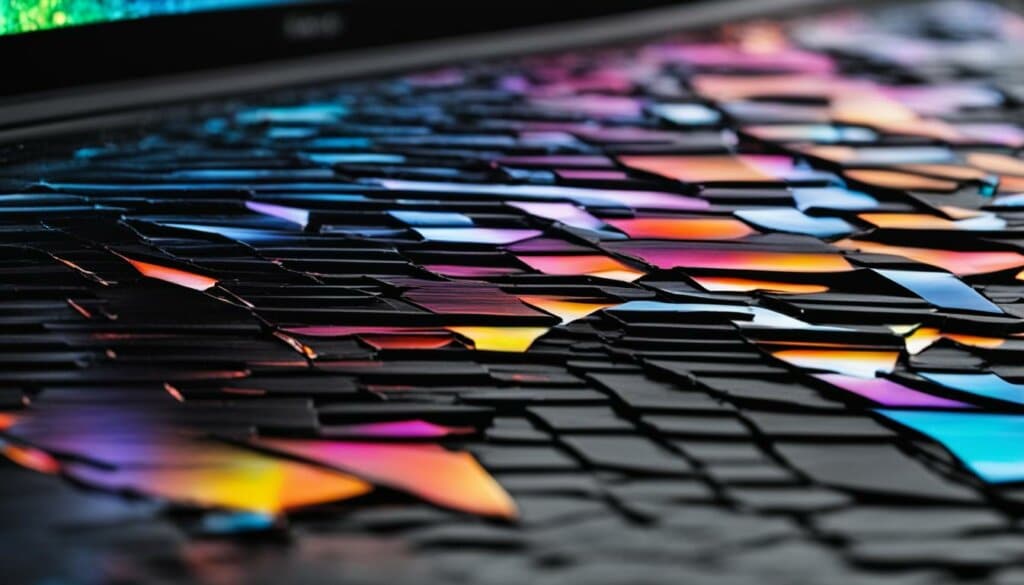
How to Diagnose and Revive Your Laptop Screen
Diagnosing and reviving a damaged laptop screen is crucial to restore optimal performance. By identifying the specific issues and employing the correct solutions, you can bring your screen back to life. Here are some common problems and their respective fixes:
Physical Damage: Cracked Screen
If your laptop screen is physically damaged with cracks or breaks, a screen replacement is often necessary. It’s recommended to seek professional help for this type of damage. They can diagnose the issue and install a new screen to restore functionality.
Dead or Stuck Pixels
Dead or stuck pixels can be quite an annoyance on your laptop screen. Fortunately, there are methods to revive them. You can try using software tools designed to fix dead or stuck pixels, or you can apply gentle pressure to the affected pixel using a soft cloth or screen-cleaning pad.
Lines on the Screen
If you notice lines appearing on your laptop screen, it may be caused by loose cable connections. To fix this, you can try gently reseating the cable connections. If the issue persists, it’s recommended to seek professional assistance to avoid further damage.
Screen Flickering
Screen flickering can be a result of various issues, such as a faulty backlight or graphics card problems. To fix this, you can try adjusting the screen refresh rate, updating graphics drivers, or contacting technical support for further assistance.
Dark Screen, Discoloration, Burn-in, and Blank Screen Issues
Dark screens, discoloration, burn-in, and blank screen issues may have different causes and solutions. It’s important to diagnose the specific issue first. Adjusting brightness and contrast settings, performing screen calibration, or seeking professional help are potential solutions for these problems.
Having a clear understanding of the various laptop screen issues and their corresponding solutions will help you diagnose and revive your laptop screen effectively. In the next section, we will discuss useful tips for cleaning and maintaining your laptop screen for optimal performance.
Tips for Cleaning a Laptop Screen
If you want to keep your laptop screen looking pristine and free from dirt and smudges, regular cleaning is key. Follow these simple tips to clean your laptop screen safely and effectively.
Gather the Necessary Supplies
To clean your laptop screen, you will need a microfiber cloth and deionized water. Avoid using any harsh cleaning products or solvents, as they can damage the screen’s delicate surface.
Step-by-Step Cleaning Method
- Gently dust off the screen using the microfiber cloth. This will remove any loose particles or debris.
- Dampen the microfiber cloth with a small amount of deionized water. Be sure not to saturate the cloth, as excess moisture can seep into the screen and cause damage.
- Starting from the top of the screen, wipe in a gentle, circular motion. This will help to remove any smudges or fingerprints.
- If there are any stubborn marks, lightly apply more pressure while cleaning. However, be careful not to press too hard, as this could damage the screen.
- Once you have thoroughly cleaned the screen, use a dry portion of the microfiber cloth to remove any remaining moisture.
It’s important to note that you should never spray water or cleaning solution directly onto the screen. Doing so can lead to moisture seeping into the edges of the screen and causing damage to the internal components.
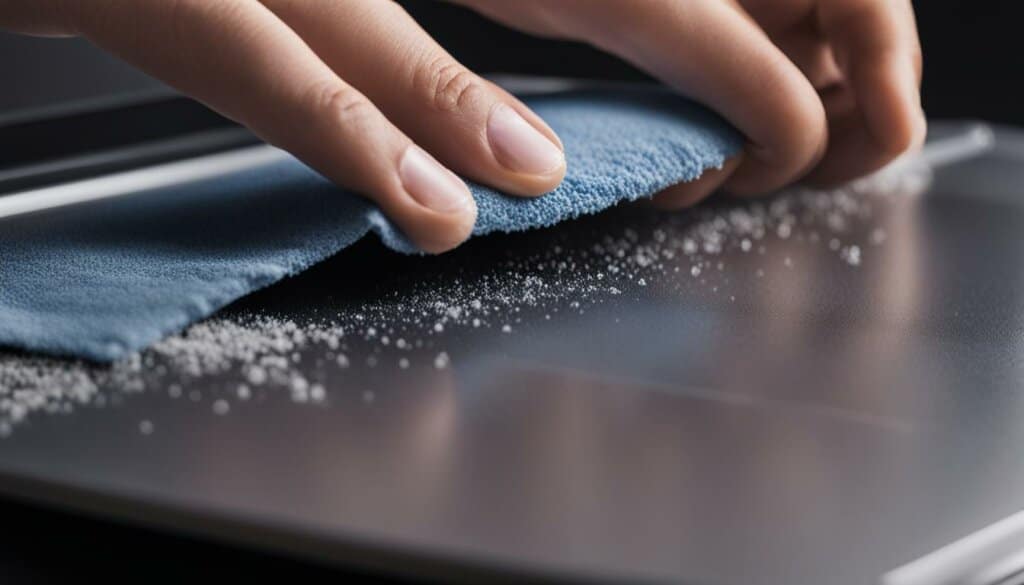
By following these tips, you can keep your laptop screen clean, clear, and free from smudges. Regular cleaning will not only enhance your viewing experience but also help to extend the lifespan of your laptop.
Conclusion
To ensure the longevity and optimal performance of your laptop screen, proper care and maintenance are crucial. Regular cleaning, gentle handling, and avoiding excessive heat are key practices that will keep your screen in top shape.
By following the tips and techniques provided in this guide, you can easily clean and maintain your laptop screen. Regularly remove dust and dirt with a microfiber cloth and deionized water, avoiding harsh chemicals that may cause damage. Handle your laptop screen with care, avoiding forceful touches that could result in cracks or other damage.
Additionally, be mindful of the temperature and ensure good ventilation to prevent overheating, as excessive heat can negatively impact the performance and lifespan of your laptop screen.
By implementing these practices, you can enjoy crystal-clear viewing and prolong the life of your laptop screen. Take the necessary steps to care for your laptop screen today and enjoy optimal performance for years to come.
FAQ
How do I clean my laptop screen safely?
To clean your laptop screen safely, use a microfiber cloth and deionized water. Gently wipe the screen in a circular motion to remove dust and dirt. Avoid using harsh chemicals, as they can damage the screen. Ensure the cloth is clean and dry before wiping the screen.
How often should I clean my laptop screen?
It is recommended to clean your laptop screen frequently to prevent build-up and potential damage to the components. A weekly or bi-weekly cleaning routine can help maintain the screen’s clarity and performance.
What should I avoid when cleaning my laptop screen?
When cleaning your laptop screen, avoid using abrasive materials, such as paper towels or rough cloths, as they can scratch the screen. Additionally, avoid applying excessive pressure while cleaning, as it can damage the delicate screen.
What are the different types of laptop screens?
The most common types of laptop screens are LCD, LED, and OLED. LCD screens provide sharp images and energy efficiency. LED screens offer vibrant colors and durability. OLED screens provide superior color accuracy and contrast.
How can I recognize different types of laptop screen damage?
Laptop screens can suffer from various types of damage, including cracked or broken screens, dead or stuck pixels, lines on the screen, screen flickering, dark screens, discoloration, burn-in, and blank screen issues. Each type has its own unique characteristics and causes, requiring different solutions for repair.
How can I fix a cracked laptop screen?
For a cracked laptop screen, a screen replacement is often necessary. It is recommended to seek professional help or contact the laptop manufacturer to ensure proper installation and compatibility.
What should I do if I notice dead or stuck pixels on my laptop screen?
Dead or stuck pixels can sometimes be fixed by using software or applying gentle pressure on the affected area. However, it is important to exercise caution when attempting these methods and consider reaching out to a professional if the issue persists.
How can I troubleshoot lines on my laptop screen?
Lines on the screen can be caused by loose cable connections. Carefully check and secure the cables connecting the screen to the laptop. If the issue persists, contacting a professional for further assistance may be necessary.
What could be causing screen flickering on my laptop?
Screen flickering can be caused by a faulty backlight or issues with the graphics card. Updating drivers, adjusting screen refresh rates, or seeking professional help to diagnose and fix the problem are possible solutions.
What should I do if my laptop screen appears dark?
Dark screens can be caused by a variety of factors, including brightness settings, software issues, or backlight problems. Adjusting brightness settings, updating software, or seeking professional help can help resolve the issue.
How can I fix discoloration or burn-in on my laptop screen?
Discoloration or burn-in can sometimes be fixed by running screen burn-in tools or using specialized software. Be cautious when using these methods and consider seeking professional assistance if the problem persists.
What should I do if my laptop screen goes blank?
If your laptop screen goes blank, try restarting the laptop or adjusting power settings. If the issue persists, it may require further troubleshooting or professional evaluation to determine the cause and appropriate solution.

